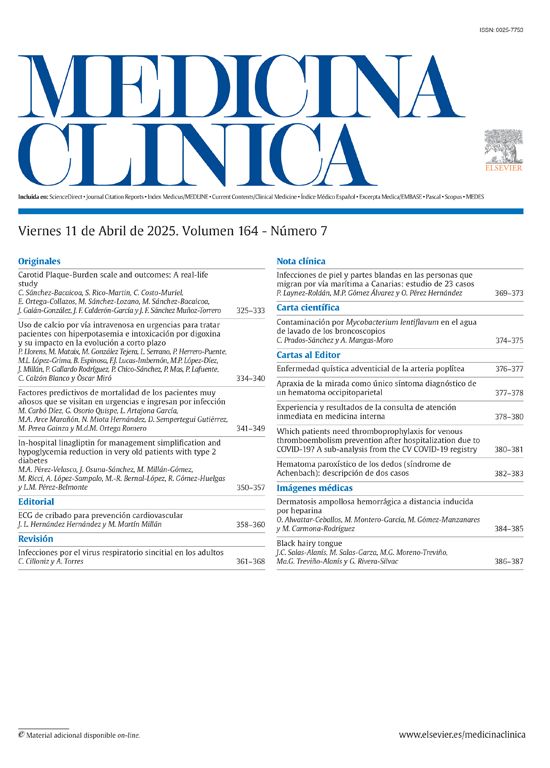Background: We sought to evaluate whether the quality markers used to assess the outcomes of emergency care are modified by emergency department (ED) overcrowding.
Patients and method: The study was performed during 4 consecutive years (208 weeks) at the Internal Medicine Unit (IMU) of ED of a third level urban hospital. To quantify attendance requirement we used the number of weekly visits to the IMU as marker. The markers used to quantify quality of care were the weekly percentage of the following: a) patients who leave ED the department without being seen by a physician (LWBS); b) those who leave ED against medical advice (AMA); c) return visits to the department before 72 hours of previous discharge (revisited, R), and d) those who died in the IMU (dead, D). We quantified also the percentage of registered complaints (C). We considered the use of the IMU to be adequate when less than 700 patients/week, to be excessive if was between 701 and 800, and to have the overcrowded IMU if was more than 800.
Results: We registered a mean of 723 (60) weekly visits. LWBS, AMA, R, D and C indexes were 0.90% (CI: 0.76-1.03%), 0.19% (CI: 0.15-0.22%), 1.77% (CI: 1.69-1.86%), 0-87% (CI: 0.80-0.91%) and 0.24% (CI: 0.21-0.27%), respectively. In 38% of weeks the use of the IMU was adequate, in 51% was excessive, and in 11% was overcrowded. When we compared quality markers in relation to the level of occupation, we found a significant increase in LWBS, R and D indexes during the weeks of excessive occupation or overcrowding in relation to the weeks of adequate occupation (p < 0.0001; p < 0.0001, and p < 0.05, respectively). We also found a significant positive correlation between the number of weekly visits to IMU and LWBS, AMA R and D values (p < 0.0001; p = 0.002; p = 0.0001, and p < 0.05, respectively).
Conclusion: ED overcrowding is associated to a decrease in the majority of quality markers.






